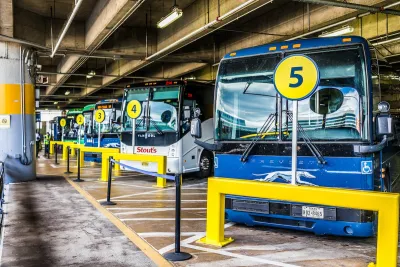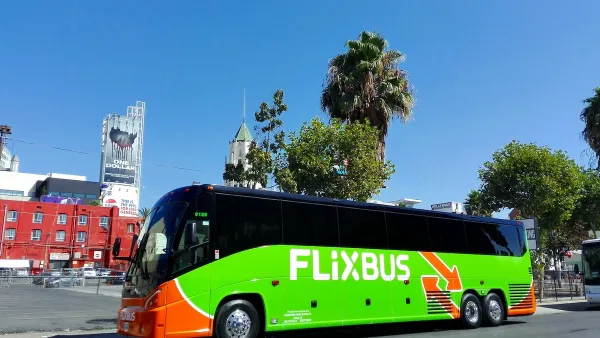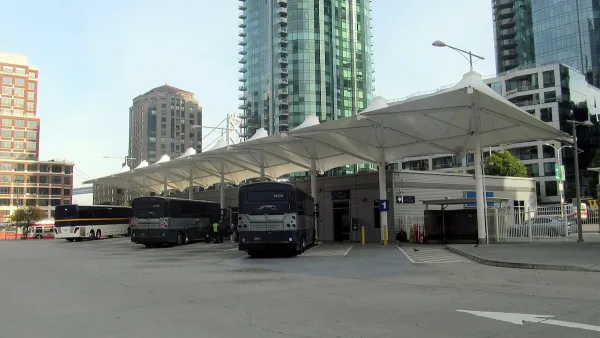Facing financial troubles, intercity bus operators are leaving passengers stranded without services in many U.S. markets.

The downward spiral for intercity bus service continues months after Coach USA, one of the nation’s biggest operators, filed for bankruptcy. Shortly after, Megabus announced it would suspend service in many of its markets, leaving passengers in a lurch.
In a piece for Streetsblog USA, Aaron Short outlines the history of modern intercity bus service and its struggle to maintain service after the pandemic, as well as its impacts on passengers who depend on it.
The disruption is the latest blow to a long-overlooked segment of the transportation sector that has failed to recover since the pandemic, been picked apart by private equity, and received little assistance from federal and state governments.
Meanwhile, bus stations with amenities are shuttering around the country as Greyhound sells off its properties, forcing bus passengers to wait for buses on poorly lit sidewalks or parking lots with no access to restrooms, shelter, or ticket agents. Few cities, such as Washington, D.C., are actively supporting intercity bus service by providing space for buses at major transit stations.
But that isn’t the case for most cities. “In some parts of the country, Megabus’s absence could prompt people to purchase vehicles or lead to less travel for job opportunities, education, and health care.”
FULL STORY: New Crisis for Inter-City Customers As Megabus Goes Bust

National Parks Layoffs Will Cause Communities to Lose Billions
Thousands of essential park workers were laid off this week, just before the busy spring break season.

Retro-silient?: America’s First “Eco-burb,” The Woodlands Turns 50
A master-planned community north of Houston offers lessons on green infrastructure and resilient design, but falls short of its founder’s lofty affordability and walkability goals.

Delivering for America Plan Will Downgrade Mail Service in at Least 49.5 Percent of Zip Codes
Republican and Democrat lawmakers criticize the plan for its disproportionate negative impact on rural communities.

Test News Post 1
This is a summary

Test News Headline 46
Test for the image on the front page.

Balancing Bombs and Butterflies: How the National Guard Protects a Rare Species
The National Guard at Fort Indiantown Gap uses GIS technology and land management strategies to balance military training with conservation efforts, ensuring the survival of the rare eastern regal fritillary butterfly.
Urban Design for Planners 1: Software Tools
This six-course series explores essential urban design concepts using open source software and equips planners with the tools they need to participate fully in the urban design process.
Planning for Universal Design
Learn the tools for implementing Universal Design in planning regulations.
EMC Planning Group, Inc.
Planetizen
Planetizen
Mpact (formerly Rail~Volution)
Great Falls Development Authority, Inc.
HUDs Office of Policy Development and Research
NYU Wagner Graduate School of Public Service





























